The finest japanese knives for bluefin tuna
Summary:
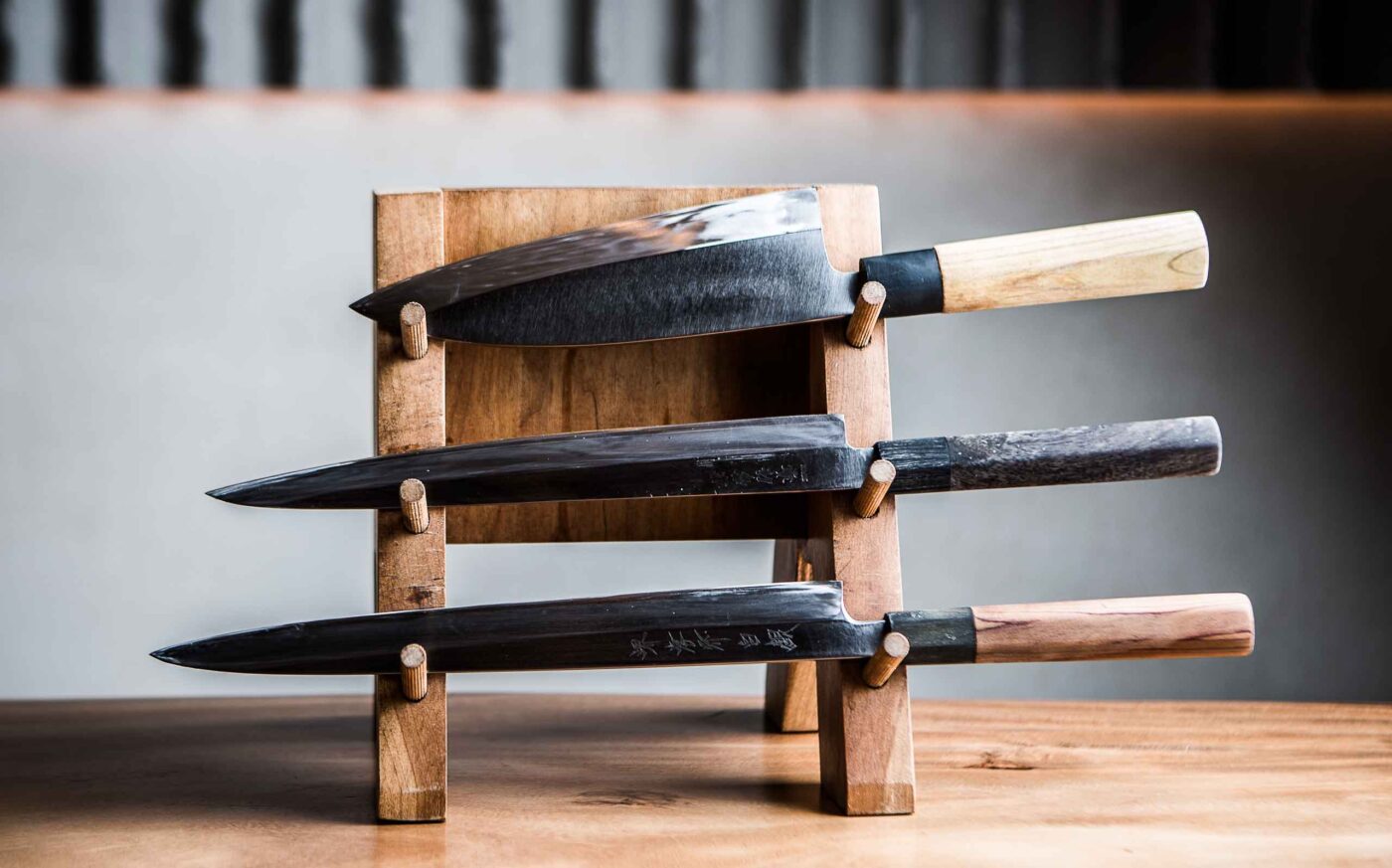
Ever since I arrived in this succulent enclave called Spain, I have been aware of its magnificent, historic, literary and sublime knife-making industry. The craftsmen of Arcos, born and bred in Albacete, still have their popularity and success writ large, having refined the noble art of the forge with exquisite results, to produce that simple, functional array of cutting implements for haute cuisine. Many miles away though, from those quixotic lands of plump cheeses and imagined giants, a handful of workshops dedicate their efforts to tempering legendary creations that have made a global name for themselves. I speak of the shadowy forges of my beloved Japan, home to mythic silvery blades, ancestral knowledge handed down to pupils (more or less rebellious, always sharp-witted) through rituals with their own codes of honour.
But no, these are not katanas nor solemn samurai as in a Tarantino flick in which a yellow jump-suited and blonde-haired warrior dices up her enemies. Like offshoots of that more or less plausible imagery, we here find the authentic kitchen knives of Japan. On my travels around this wide and wild world, I have come across countless chefs who pamper their hochos (knives in my native tongue) or bochos (the Western phonetic degeneration of the same term) like children, polishing their surface to a lustre, making their blade sing. And using them to serve up morsels of raw fish fit for the gods.
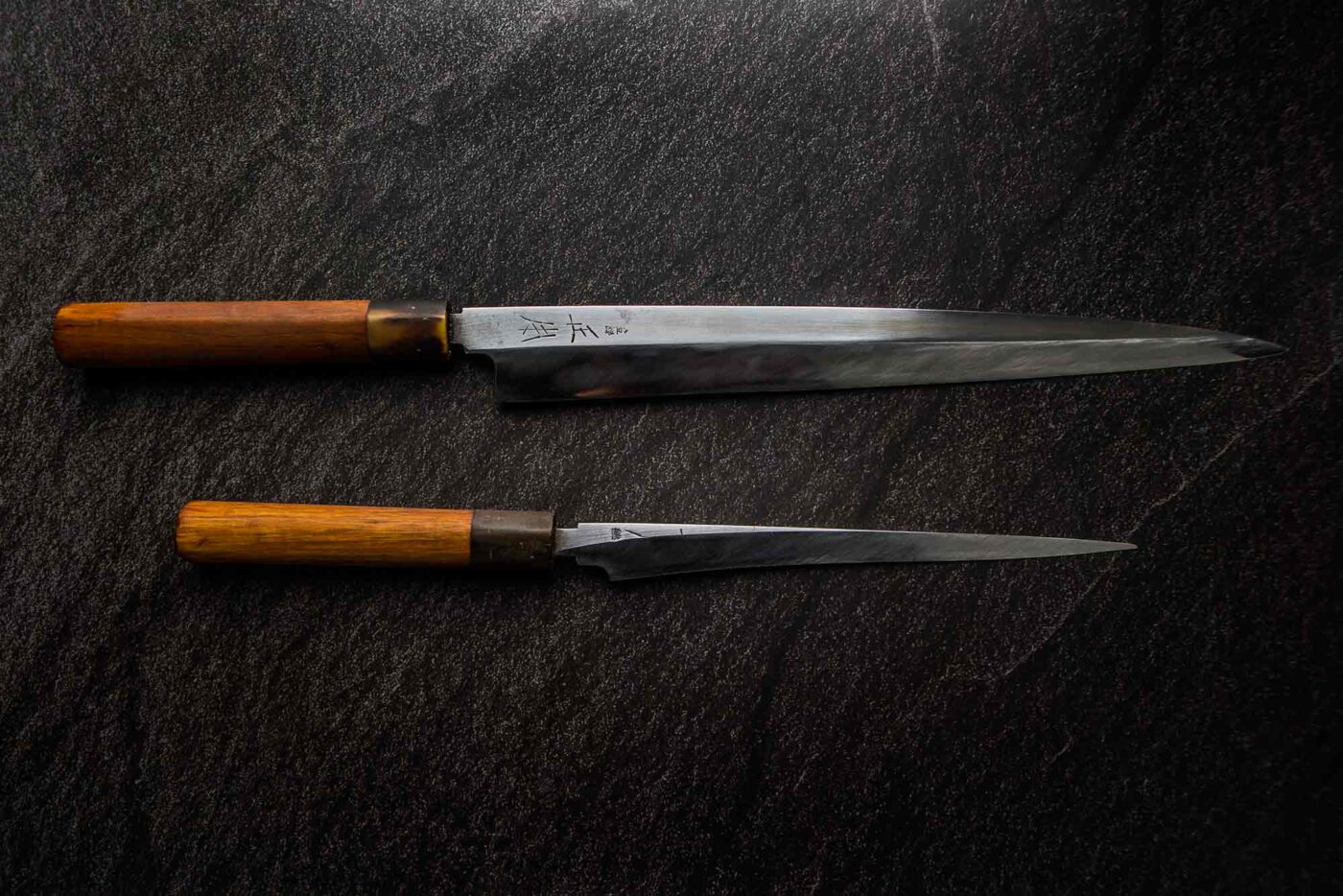
The home of Japan’s finest knives
A mystic and telluric relationship is forged between master craftsmen and knife, referring back to the primitive fire and a series of principles dating back centuries, a bond and story that must then be continued between chef and diner. My culinary countrymen have internalised this corpus and this mission with respect and devotion. If one turns to a map, there are a handful of cities that stand out for this igneous art in the service of gastronomy: Tosa (Kochi prefecture), Seki (Giffu prefecture), Sanjo and Tsubame (Niigata prefecture), Takefu and Ono (Fukui prefecture), Miki (Hyogo prefecture) and ahead of all others, Sakai (in Osaka).
It is here that we will pay a visit (the epicentre of katana production since the 14th century), since more than 90% of Japanese chefs in charge of a professional kitchen treasure their wa-bōchō knives, bespoke creations with a single cutting edge, combining fire, water, iron and steel, that will cut at the slightest touch. This forge deserves a whole article of its own, and so we will focus here on what are simply the finest kitchen knives in the world. The body, Honyaki steel, the name of the traditional Japanese production method most often seen in kitchen knives (but also in other tools) which involves forging a blade with a technique that most closely resembles the nihonto (katana) tradition, beginning with a single piece of high carbon steel, covered with cold clay.
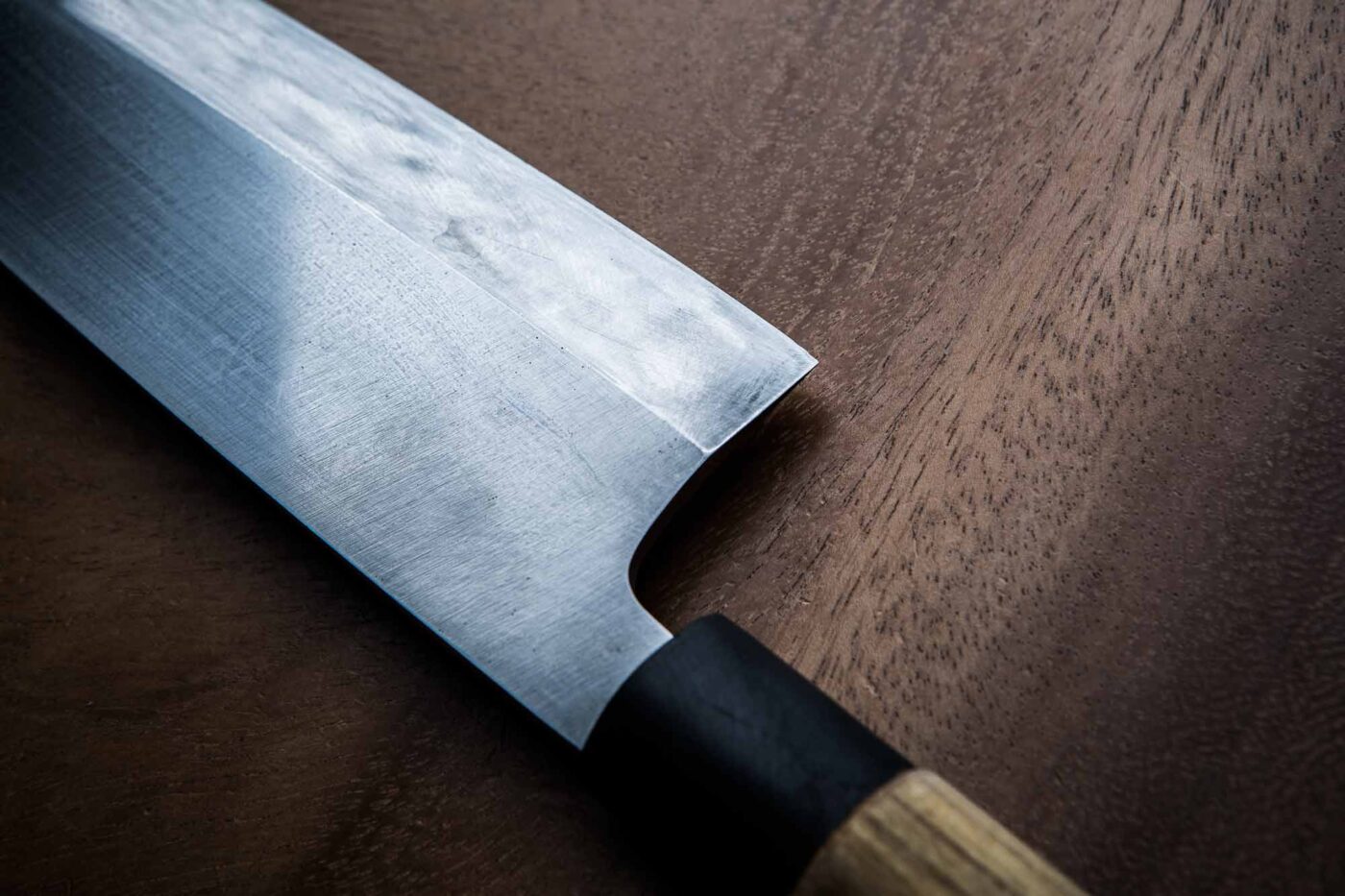
Sakai’s knife making industry dates back to the 15th century, when a group of blacksmiths descended from skilled swordsmen relocated to the town from the province of Kaga (now Ishikawa prefecture). During what was known as the Genroku era (late 17th century) the style of single-edged knives emerged here.
Which knife for bluefin tuna?
We will concentrate here on those types which are best suited for sushi/sashimi, to be applied to the akami, toro and chutoro of Fuentes Bluefin Tuna: the yanagi or yanagi-ba knives (long and flexible like a willow branch, in translation), ideal for cutting raw fish. They will last you a lifetime, cost from 50 up to 6,000 euros in the case of collector’s pieces, and boast unique characteristics. One might say that they do not cut, but divide with a mere caress. They slide with a silent cadence. Because they slice with a single, precise press of the wrist.
When preparing sashimi, nigiri or sushi, the rule is that the cut surface should be smooth, glossy and uniform, to maximise the flavour (and they should not become greasy after contact with the produce). Which is why the non-stick properties of their blades are so important. The rear face (urasuki) is concave, in order easily to separate the salmon or bluefin tuna being cut, while the front bevel (shinogi) allows the piece cut to be easily separated from the blade after cutting.
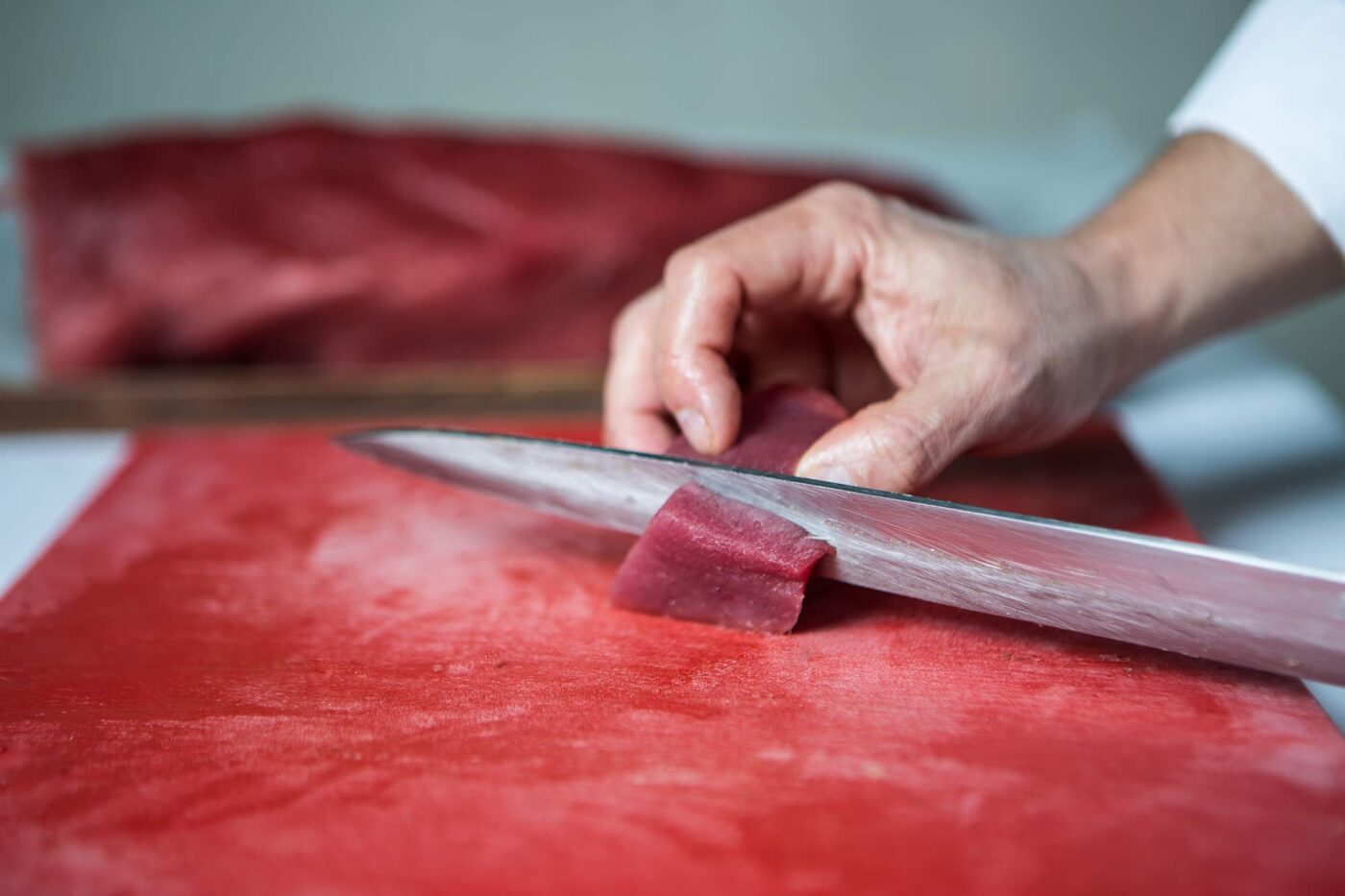
Con la feroz competencia de las hojas alemanas y de algunas firmas francesas y suizas, estos cuchillos Faced with fierce competition from German blades, and a number of French and Swiss firms, these knives, one might say, increasingly look to the West, using patented high-quality “Hyper Molybdenum Vanadium” steel, containing 1% carbon. The handles are of magnolia, yew or ebony, or of water buffalo bone. The yanagi ba is made using katana techniques (dating back to the era of the samurai or Edo shogunate), tailored to both domestic and professional needs. The blade is forged with soft steel, allowing for general hardness and ease of sharpening, laminated with blue or white steel, giving the cutting edge its hardness and sharpness.
Knife sets
Like close siblings of the yanagi, a set of knives must include a gyoto (or classic chef’s knife, with a blade of up to 240 mm, and with Damascene arabesque motifs); a deba, to cut fish bones and cartilage; an usuba or nakiri, for vegetables and thin tempura; and lastly, the popular santoku (less traditional), which can be used for vegetables, meat or fish alike, and has a western appearance, designed in a single size.
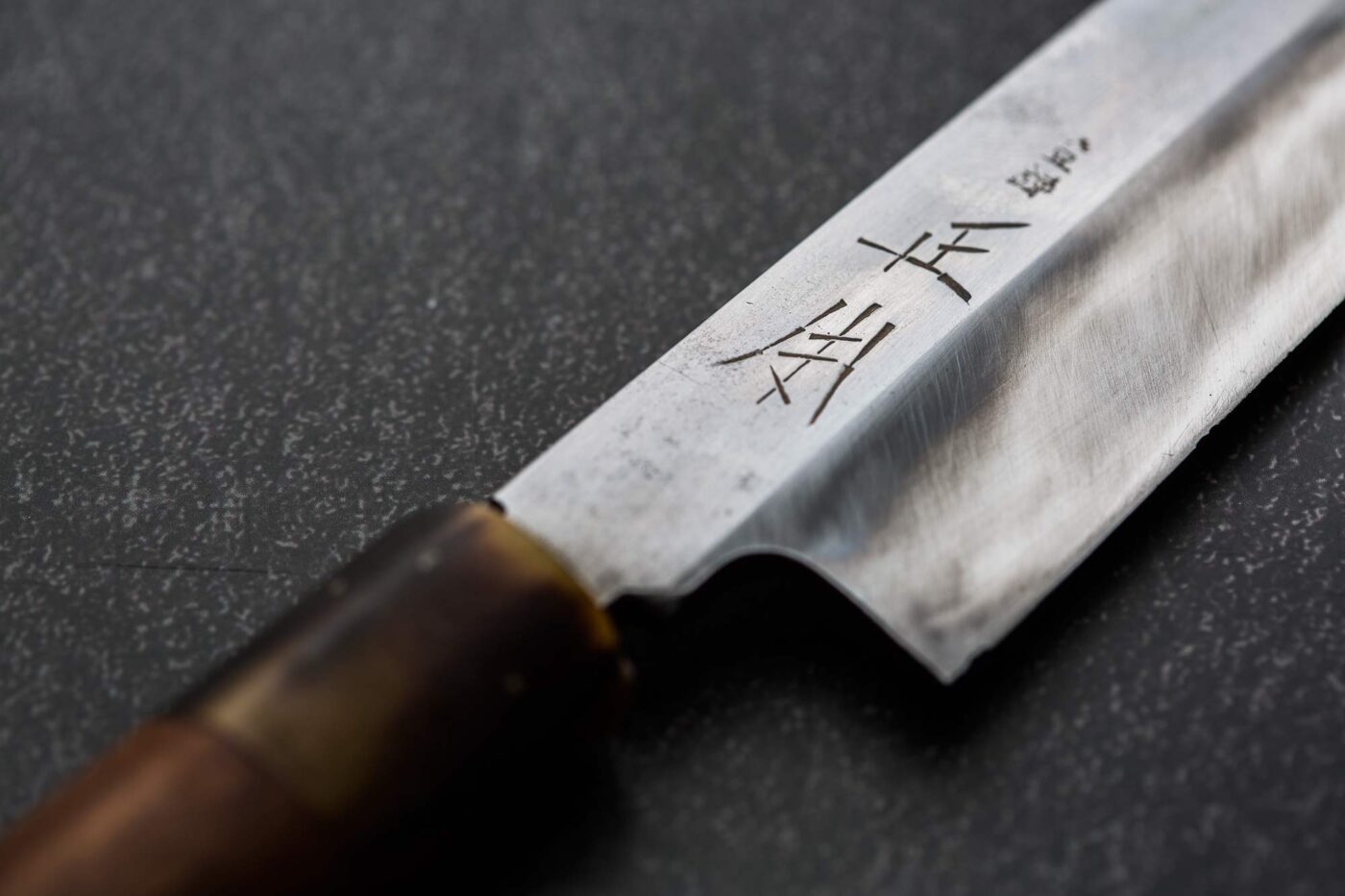
For those travelling to Japan or wishing to purchase a specimen online, these daysthere are around a hundred brands of knife worth buying. Masamoto Sohoten, Mizuno Tanrenjo (a craft workshop from Sakai), Shibata, Moritaka and Yoshikane, Kurotori, Fujiwara, Hinokuni, Hajegato, Tsubamesanjo, Tojiro, Jikko, Takayuki… A word of caution: yanagi-ba are intended for the right-handed, although an increasing number of forges now cater for left-handed chefs, by flipping the blade over. If you have a good Japanese knife at home, get it sharpened every now and then by a reliable professional, and don’t even think of placing such a gem in the dishwasher, as it will lose both its temper and its legendary aura…
